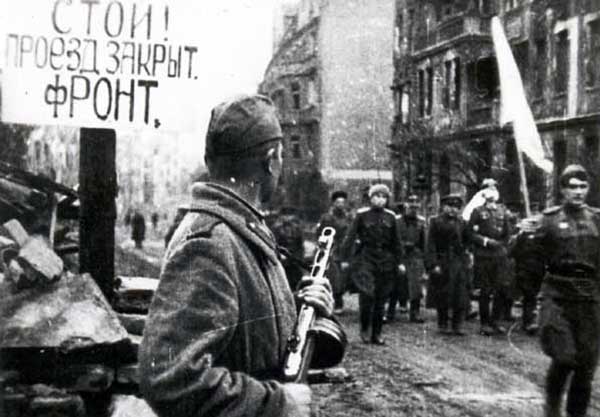
“By 1942, Smith’s company became the largest producer of nylon parachutes in the world, producing 300 parachutes each day for the U.S. military.”
By Aaron Bennett
MILITARY AVIATION buffs might not know the name Floyd Smith, but all are familiar with his life-saving invention: the modern parachute.
While parachutes date back to the Renaissance – with improvements made throughout the 18th and 19th centuries – Smith’s design made substantial enhancements. These included the ability to store the parachute on a pilot’s back, the addition of a ripcord that allowed for deployment safely away from an airplane, and the addition of a smaller “pilot chute” that would pull the main parachute from the pack and open it. These advancements saved the lives of many Allied troops during World War II.
In recognition of Armed Forces Day, the National Inventors Hall of Fame (NIHF) invites you to learn more about the incredible life of recent NIHF Inductee Floyd Smith, inventor of the modern parachute.

A Life of Death-Defying Experiences
Born in 1884 in Geneseo, Illinois, the story of Smith’s life sounds similar to the script for an action movie. At just 10 years old, he was a cowboy earning his own living on a ranch. He later worked as a machinist, an orange grower, a sugar factory worker and a trapeze artist in the circus.
As a member of the Flying Sylvesters, he toured the country for several years, performing in circus and vaudeville acts. In 1907, he married Hilder F. Youngberg, his fearless partner in daring aerial acts. The couple’s shared interest in airplanes led them to try building one of their own, and in 1912, they built a tractor biplane. It took Smith just six days to learn how to fly. The couple later flew their plane from Santa Ana to Griffith Park in Los Angeles, completing the trip in one hour and seven minutes and setting a speed record for the time.

Barnstorming and Parachuting
Toward the end of World War I, the United States found itself with surplus aircraft. Fighter pilots began purchasing planes for only $200 (compared to their $5,000 price tag during the war) and traveling to different towns to put on aerial performances as a way to support themselves. Named after the agreements pilots made with farmers to use their fields to perform, “barnstorming,” or stunt flying, became a popular form of entertainment.
Due to a lack of regulation, pilots were able to fly incredibly low to the ground and perform death-defying stunts like walking across an aircraft’s wings or hanging onto a plane with one arm. Following their record-setting flight to Griffith Park and inspired by their experience with the Flying Sylvesters, the Smiths began barnstorming and were attracted to the thrill it provided.
When Smith began to work as a mechanic at the Glenn L. Martin Co. factory in Los Angeles, he soon found another source of thrills as he made his first parachute jump.
Smith’s first jump was made with a static-line chute, which attached to the plane. Though he managed to land safely, he realized how easily he could have become entangled in the parachute cord following his jump.
Not long after this first jump, Smith’s wife had a harrowing experience with a parachute jump of her own. On a particularly windy day in April 1914, Hilder’s jump went wrong when the plane she was in flew off course above the Pacific Ocean. Because she could not swim, she panicked and fell, twisting the lines of her parachute in the process. Fortunately, she was able to untangle herself and deploy her parachute 250 feet above the water. Gliding safely to land, she missed the water by just 50 feet.
Smith quickly became convinced that jumpers needed the ability to manually operate the deployment of their parachute, instead of having it connected to the plane itself.

A Reliably Safe Design
Smith designed a parachute that would be worn on the body and could be released by a mechanism that was attached to the pack itself. This model would allow jumpers to deploy the parachute’s canopy manually, using a ripcord.
Around the time Smith filed a patent to protect his parachute design, in July 1918, he was hired by the U.S. Army to inspect and test planes at South Field in Dayton, Ohio. His parachute would prove to be just what the Army needed. The design offered exceptional adaptability in escaping from dangerous situations in planes, such as spins, dives or inverted positions. A parachute design called the “Type A,” closely based on Smith’s original model, became the Army’s standard parachute.
When Smith left government service in 1919, he licensed his patents to a number of parachute manufacturers and help found the Pioneer Parachute Co., where he served as both vice president and chief engineer.
Due to silk shortages caused by World War II, Pioneer decided to manufacture their parachutes out of nylon and by 1942, Smith’s company became the largest producer of nylon parachutes in the world, producing 300 parachutes each day for the U.S. military. During D-Day, many American troops used Pioneer parachutes to jump behind enemy lines.
In 1947, Smith founded the Smith Parachute Co. with his son, Prevost. This company continued to innovate and improve parachute technology and developed special parachutes for astronauts and for supply drops of military weapons and equipment.
Smith passed away in 1956 and is buried along with his wife under the dome of The Portal of the Folded Wings, a monument dedicated to American aviation pioneers.
Learn More About Our World-Changing Inductees
To learn more about other incredible NIHF Inductees, including many who have served in the U.S. military, we invite you to visit our website.
Aaron Bennett is a writer for the National Inventors Hall of Fame









